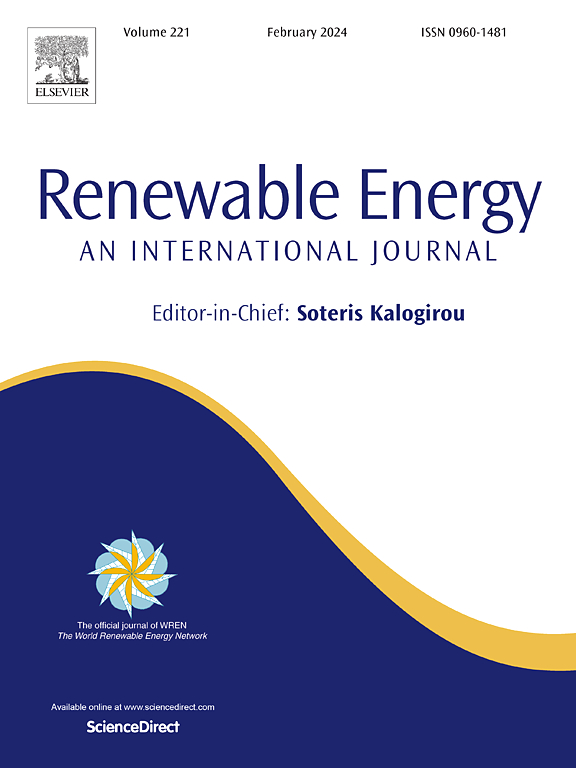超临界CO2混合布雷顿有机朗肯循环集成与太阳能中央塔颗粒接收器:性能,火用分析,并选择有机制冷剂
IF 9
1区 工程技术
Q1 ENERGY & FUELS
引用次数: 0
摘要
采用粒子接收器对超临界CO2混合布雷顿-有机朗肯循环(ORC)与聚光太阳能(CSP)系统的集成进行了研究。它侧重于评估系统的能量和火用性能,以提高其效率和降低燃料消耗。颗粒接收器使用碳化硅和空气的混合物作为工作流体,允许在适合与超临界CO2布雷顿循环耦合的更高温度下运行。利用Mathematica软件和工程方程求解器(EES)建立了详细的热力学模型,模拟了系统在各种条件下的行为。结果表明,将颗粒接收器与混合Brayton循环相结合可显著降低燃油消耗63.2%。火用分析表明,在整个系统的热交换器中发生了最高的火用破坏,这表明了进一步提高效率的潜在领域。该研究还强调了底部循环中使用的ORC工作液对系统性能的关键作用。在测试的流体中,R600a被发现是最有效的,在考虑的条件下提供最高的效率。结果强调了将粒子接收器集成到CSP系统中以提高能源效率和发电的可持续性的潜力,因此,它代表了实现更有效和可持续发电的有希望的方法。本文章由计算机程序翻译,如有差异,请以英文原文为准。
Supercritical CO2 hybrid Brayton–Organic Rankine Cycle integrated with a solar central tower particle receiver: Performance, exergy analysis, and choice of the organic refrigerant
A study of the integration of a supercritical CO hybrid Brayton–Organic Rankine Cycle (ORC) with a Concentrated Solar Power (CSP) system using a particle receiver is presented. It focuses on evaluating the energy and exergy performance of the system to improve its efficiency and reduce fuel consumption. The particle receiver uses a mixture of silicon carbide and air as the working fluid, allowing operation at higher temperatures suitable for coupling with the supercritical CO Brayton cycle. Detailed thermodynamic models were developed using Mathematica and Engineering Equation Solver (EES) to simulate the behavior of the system under various conditions. The results show that coupling the particle receiver with the hybrid Brayton cycle significantly reduces fuel consumption by 63.2%. The exergy analysis shows that the highest exergy destruction occurs in the heat exchangers of the entire system, indicating potential areas for further efficiency improvements. The study also highlights the critical role in system performance of the ORC working fluid used in the bottoming cycle. Among the fluids tested, R600a was found to be the most effective, providing the highest efficiency under the considered conditions. The results highlight the potential of integrating particle receivers into CSP systems to improve both the energy efficiency and sustainability of power generation, and thus, it represents a promising approach for achieving more effective and sustainable power generation.
求助全文
通过发布文献求助,成功后即可免费获取论文全文。
去求助
来源期刊

Renewable Energy
工程技术-能源与燃料
CiteScore
18.40
自引率
9.20%
发文量
1955
审稿时长
6.6 months
期刊介绍:
Renewable Energy journal is dedicated to advancing knowledge and disseminating insights on various topics and technologies within renewable energy systems and components. Our mission is to support researchers, engineers, economists, manufacturers, NGOs, associations, and societies in staying updated on new developments in their respective fields and applying alternative energy solutions to current practices.
As an international, multidisciplinary journal in renewable energy engineering and research, we strive to be a premier peer-reviewed platform and a trusted source of original research and reviews in the field of renewable energy. Join us in our endeavor to drive innovation and progress in sustainable energy solutions.
 求助内容:
求助内容: 应助结果提醒方式:
应助结果提醒方式:


